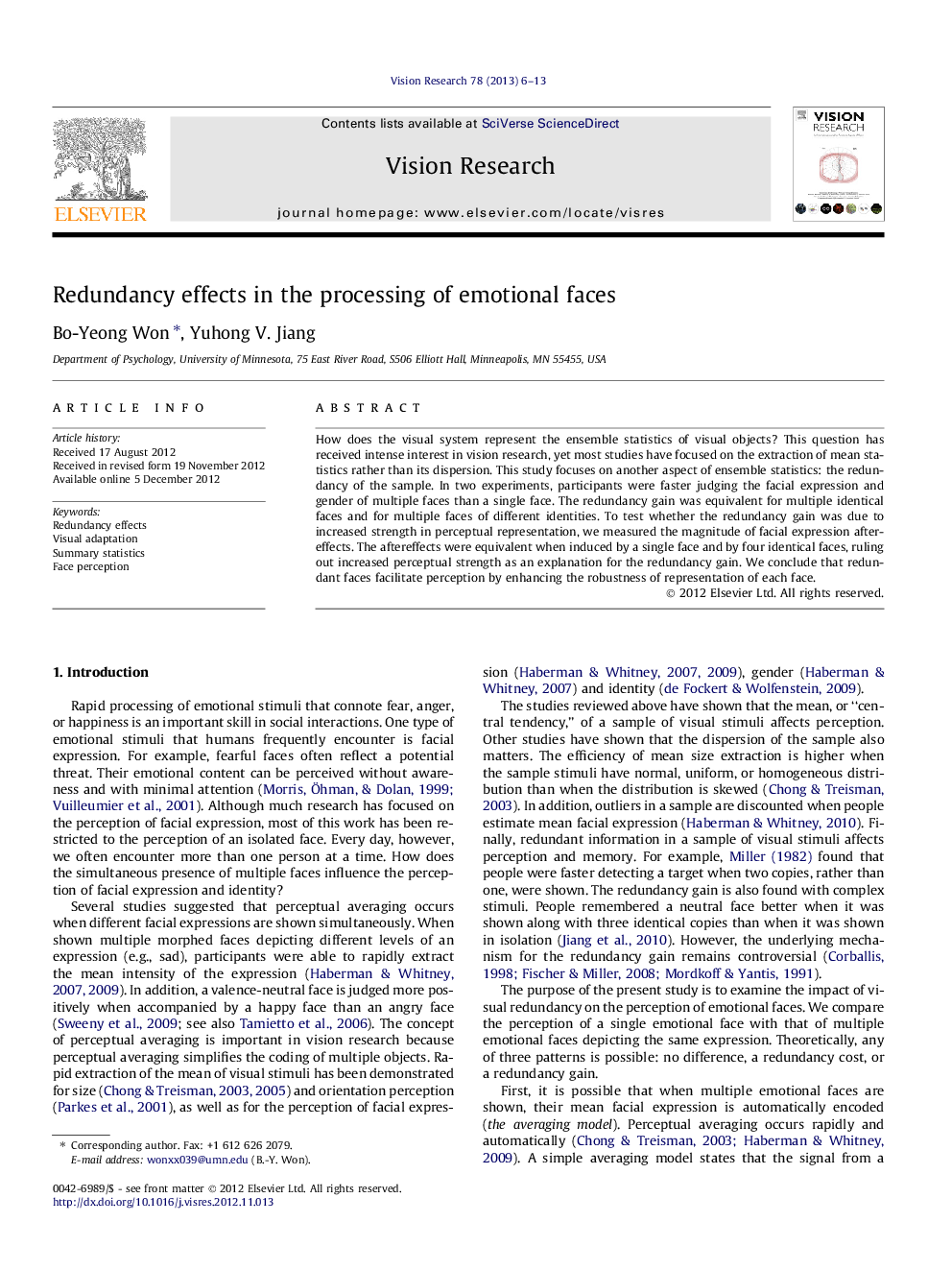| Article ID | Journal | Published Year | Pages | File Type |
|---|---|---|---|---|
| 4033851 | Vision Research | 2013 | 8 Pages |
How does the visual system represent the ensemble statistics of visual objects? This question has received intense interest in vision research, yet most studies have focused on the extraction of mean statistics rather than its dispersion. This study focuses on another aspect of ensemble statistics: the redundancy of the sample. In two experiments, participants were faster judging the facial expression and gender of multiple faces than a single face. The redundancy gain was equivalent for multiple identical faces and for multiple faces of different identities. To test whether the redundancy gain was due to increased strength in perceptual representation, we measured the magnitude of facial expression aftereffects. The aftereffects were equivalent when induced by a single face and by four identical faces, ruling out increased perceptual strength as an explanation for the redundancy gain. We conclude that redundant faces facilitate perception by enhancing the robustness of representation of each face.
► Instead of competing for visual representation, multiple faces enhance performance. ► Emotion and gender tasks are more accurate with multiple faces than a single face. ► Multiple identical faces and multiple different faces produce the same gain. ► Facial expression aftereffects are not greater after adapting to multiple faces. ► Visual redundancy enhances the robustness of visual representation.
